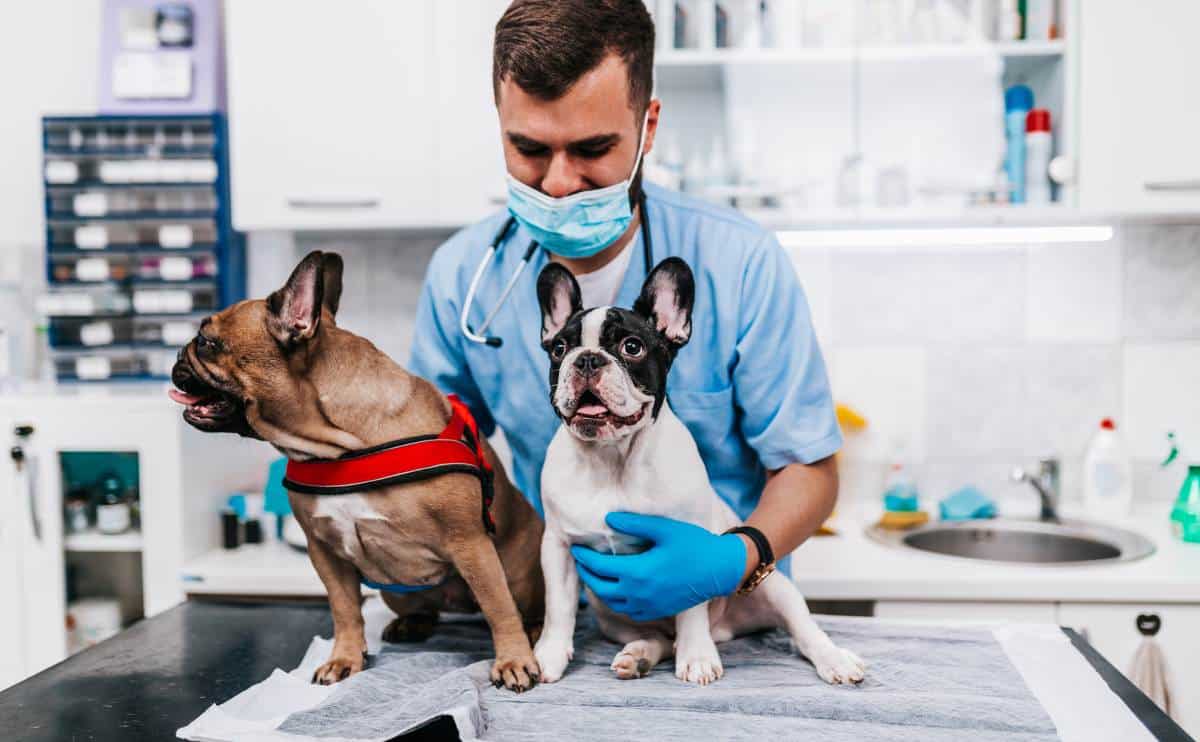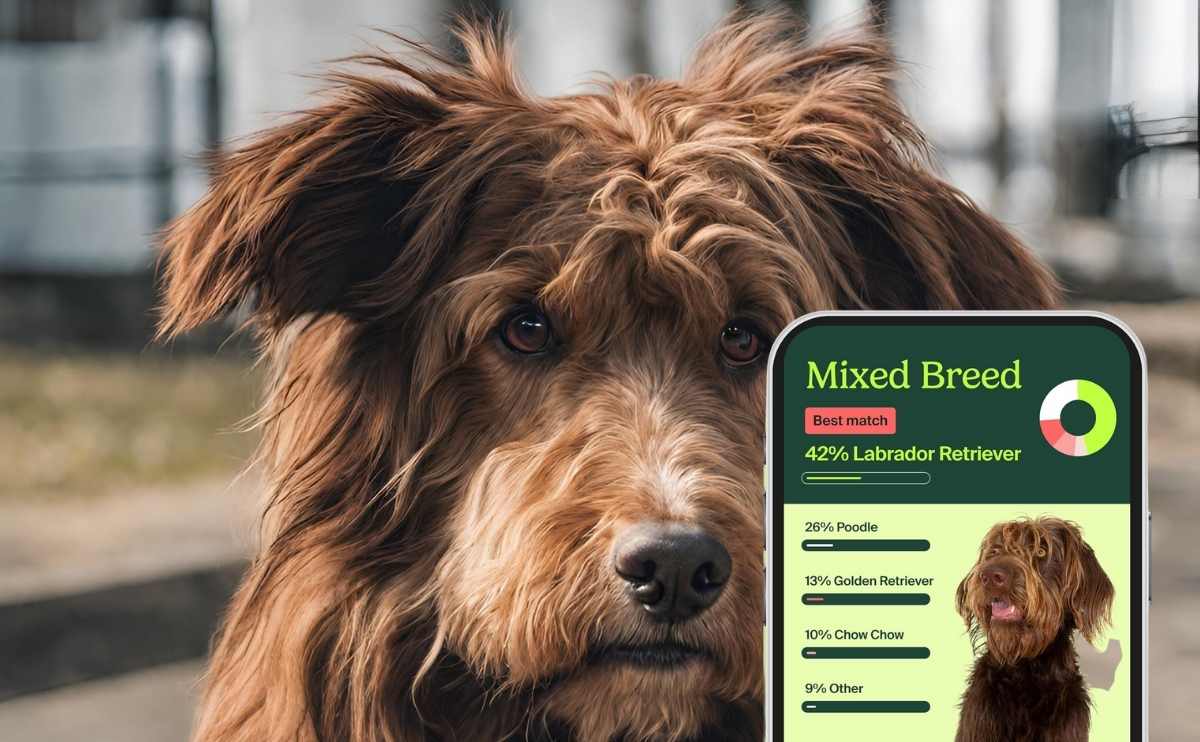When you purchase through links on our site, we may earn a commission. Here’s how it works.
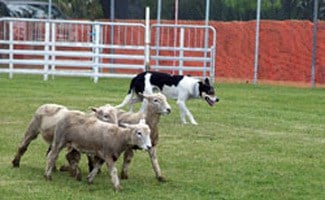
While the American Kennel Club has classifications for certain breeds of dog that determine them as “working dogs” the fact is that a dog does not have to feature in one of these classified breeds to act as a working dog. While working dogs tend to be particularly large and adapted to the rugged life of a working dog, the term “working dog” can also be used to refer to any dog with a job. In this article, we’ll describe some working dog breeds as well as the specific jobs they’re tasked with.
31 Working Dogs Breeds
As of 2022, the American Kennel Club (AKC) considers there are 31 specific working dog breeds. These particular dogs are suited to a wide range of working jobs including guarding property, watching over livestock, pulling carts, or serving as avalanche rescue dogs. The American Kennel Club’s classification of “working dogs” includes:
- Akita
- Alaskan Malamute
- Anatolian Shepherd Dog
- Bernese Mountain Dog
- Black Russian Terrier
- Boerboel
- Boxer
- Bullmastiff
- Cane Corso
- Chinook
- Doberman Pinscher
- Dogo Argentino
- Dogue de Bordeaux
- German Pinscher
- Giant Schnauzer
- Great Dane
- Great Pyrenees
- Greater Swiss Mountain Dog
- Komondor
- Kuvasz
- Leonberger
- Mastiff
- Neapolitan Mastiff
- Newfoundland
- Portuguese Water Dog
- Rottweiler
- Saint Bernard
- Samoyed
- Siberian Husky
- Standard Schnauzer
- Tibetan Mastiff
But, there are plenty of dog breeds outside of this list that are also capable of holding any range of jobs.
Types Of Working Dog Jobs
There is a particularly wide range of jobs for dogs available to those that are willing and driven to work. Some of these jobs include:
- Search and rescue work
- Tracking work
- Therapy and service dog work
- Bomb-sniffing work
- Sheep herding work or shepherding work
- Seeing eye work and visual assistance dog work
This wide range of jobs available to dogs offers any dog that is highly motivated to please and highly motivated to work, a chance to “earn their stripes” as it were. While it is true that each particular job for each dog involves a different skill set and dog that is motivated in one way or another can quite easily find a job that will satisfy their need to please.
Search And Rescue Dogs
Search and rescue work implements dogs with a particularly keen sense of smell. Search and rescue dogs are trained to find individuals, usually in a disaster type of situation. Dogs are trained to locate missing or lost individuals based on the human scent. Whether an individual is alive or dead they emit a human scent which is picked up on by a dog.
Search and rescue dogs are taught in training that seeking an individual is like a game, they are rewarded either with praise or treats when they locate a hidden individual and soon they come to see search and rescue work as a big game for which they know they will be rewarded.
Search and rescue dogs are usually called upon by police in disasters such as 9/11 or in the case of a missing person. Search and rescue dogs are usually handled by volunteers and they always work with law enforcement agencies rather than with private parties.
Search and rescue work can be particularly rewarding for any dog that is driven to seek. However, it does have its downsides. Discouragement was seen a lot in the dogs used during the 9/11 recovery, repeatedly finding dead bodies led the dog to become despondent. During such intense search situations, handlers instruct living beings to hide so they may be found and provide the dog with the hope that its work is not in vain.
Search and rescue can be hard work and is physically and mentally demanding on the dog so a search and rescue dog must be a healthy dog both mentally and physically. Specific breeds that have notably worked in search and rescue include Labrador Retrievers, Golden Retrievers, and German Shepherds.
Tracking Dogs
Tracking work is work that is similar to search and rescue work. However, it depends much more heavily on a dog’s sense of smell. Tracking work is notoriously popular among scent hounds such as Bloodhounds as a result of their incredible sense of smell. A dog such as a Bloodhound with such an incredible sense of smell is able to take a scent from a single artifact such as a piece of clothing and track a scent until it dissipates.
While as humans we are unable to detect traces of scent left behind by runaway children or even escaped criminals and thieves, a scent hound is easily able to detect scent trails by following the scent offered to it on an artifact. As with search and rescue dogs, tracking dogs are handled by a trained handler who is able to instruct the dog to follow a specific scent.
Tracking work is not suited to all dogs and it is generally Bloodhounds and other scent hounds that excel at this particular type of work. Tracking can be hard work and physically demanding on the dog so a tracking dog must be a healthy dog.
Therapy Dogs
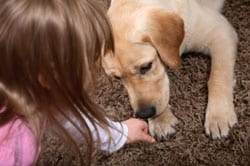
Therapy dogs are not pigeonholed as a certain breed of dog. Instead, they are dogs that thrive on social contact. Therapy dogs are trained by their handlers to have a particularly good bedside manner and after passing through a variety of good citizen training classes they then become certified to visit individuals in hospices and hospitals.
Therapy dogs are used to provide individuals in stressful environments with a way to reach out and bond with an animal that is happy to be there interacting with the patient. Generally, therapy dogs make rounds in both hospitals and nursing homes where they are taken to see individuals who request visits.
Therapy dogs are dogs who will allow themselves to be petted and loved on by complete strangers and they are dogs who are not easily scared or frightened by large machinery such as would be found in hospital rooms. While many breeds can perform as therapy dogs the most notorious breeds found in therapy work are Labrador Retrievers and Golden Retrievers. These two particular breeds are most commonly found in therapy work due to their naturally friendly nature, they are people-pleasing breeds and are willing to work hard for affection and physical contact.
Drug And Bomb Sniffing Dogs
Drug and bomb-sniffing dogs are used to detect traces of illegal substances or explosives. It takes a lot of training by a competent handler to teach a drug or bomb-sniffing dog to react appropriately to scent cues and some dogs seem to excel in the field more than others. Most importantly a drug and bomb-sniffing dog must be confident and not shy in any way, they must also have a particularly keen sense of smell and work well with handlers.
Drug and bomb-sniffing dogs can be found in a variety of settings including in police K-9 units and overseas in war zones. The life of a bomb or drug-sniffing dog can be particularly hard and it is important that the dog be allowed time away from work to socialize with other dogs and live a “normal” life where it is free of the rigorous demands of its job.
Due to the stress placed on the dog in this particular line of work the working life is generally short and dogs are retired early to prevent burnout. Dogs that are notoriously found in drug and bomb-sniffing jobs are Labrador Retrievers and German Shepherds. These two breeds excel in this work due to their need to please as well as their hard work ethic and intelligence.
Sheep Herding Dogs
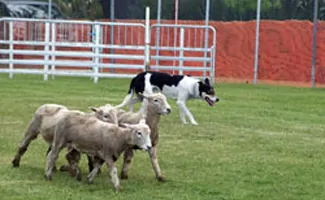
While it may not be seen as work by many, sheep herding is a particularly difficult job that takes a lot of stamina as well as intelligence from the dog in question. Sheep herding dogs must possess a herding instinct and must understand their position as second in command under their master.
Sheep herding dogs are trained to follow commands given to them by their master. These commands are generally given as short verbal commands or else are conveyed by combinations of short blasts on a high-pitched whistle.
Training a sheep herding dog takes a lot of patience by a farmer and once they are trained a sheep herding dog is particularly prized for their work. The wide variety of commands that must be learned by sheep herding dogs means that the dog must enjoy herding in order for it to want to continue working in such a laborious job. Breeds that typically work as herding dogs are Border Collies.
Seeing Eye Dogs
Seeing-eye dogs are earmarked from a very young age as suitable for their work. In general, seeing-eye dogs are picked as puppies and raised in designated homes for the sole purpose of serving as seeing-eye dogs.
Seeing eye puppies must be exposed to a wide array of stimuli in order to desensitize the dog from foreign situations and foreign items in the outside world. Seeing eye puppies are also exposed to a wide variety of people and situations so that when they enter the training program to become seeing eye dogs they do not run into fear issues when they are exposed to the world.
Training seeing eye dogs to recognize the huge variety of signals and keys in their master’s world is a particularly demanding job on both the handler and the dog and it takes a dog with a strong desire to please and an ability to focus to make a good seeing eye dog.
Dogs that are easily scared and easily distracted cannot be utilized as seeing-eye dogs. Traditionally seeing-eye dogs are either Labrador Retrievers or Golden Retrievers.
Assistance Dog Work
Assistance dog work is similar to seeing eye work. But the dog can be relied on for a variety of skills rather than just those which rely on sight. An assistance dog can be assigned to a child with developmental delays or children with autism to encourage the child to bond and explore the outside world.
An assistance dog can also be assigned to an individual who has lost the use of their arms or legs. Assistance dogs can also be provided to individuals who have lost their hearing, individuals who are diabetic or individuals who are prone to seizures.
While each of these jobs differs considerably in the training required of the dog they all demand the dog to serve an individual in need. These dogs may be relied upon to open a door using a specially installed switch, they may be required to signal an upcoming epileptic seizure, or they may be called upon to signal a sudden drop in blood sugar requiring an insulin shot.
All of these jobs require a dog to be a dog that is dedicated to its work and dedicated to the pursuit of pleasing its master and serving. Assistance dogs are generally socially open and friendly dogs that are also able to ignore strangers and foreign objects in order to focus on their specific job. Dogs that are traditionally chosen for a variety of jobs as assistance dogs are usually Labrador Retrievers, again as a result of their intelligence and their willingness to please, and dedication to hard work.
The Importance Of Working Dogs In Our Lives
While there are certainly quite a few jobs for working dogs listed above there are many more which are not listed and require a lot of work and dedication on the part of the individual dog. Each and every dog called upon for a specific job is a hard-working dog that won’t always fit the mold or the breed stereotype for the job at hand but rest assured if that individual dog is chosen for that particular job then he or she is well prepared for it.
When considering any working dog one should always also consider the amount of time and effort that an individual has put into training that dog to adequately perform the job at hand. Working dogs are not just working dogs; they are working couples, dogs that rely on a master’s instruction and guidance in order to perform their job with precision.
Want to get your dog started in becoming a working dog? Dog training is a good place to get your dog on the path to success.
Tagged With: Large Dogs, Working Dogs